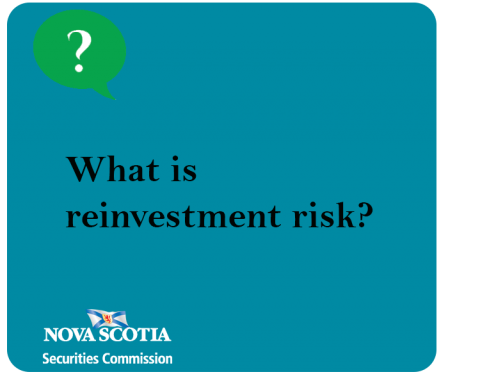Submitted by nsscadmin on

The risk series continues this week with a look at reinvestment risk.
Reinvestment risk is the risk of reinvesting the income from an investment or the principal at a lower interest rate.
For example, say you purchase a bond that pays an interest rate of five per cent. Suddenly, interest rates drop to four percent. You now have to reinvest your interest payments at a lower interest rate. This is reinvestment risk where your interest payments from the bond are earning a lower interest rate. This also applies if the bond matures and you have to reinvest the principal at less than the original five per cent.
If you choose not to reinvest your interest payments or the principal at maturity, then reinvestment risk may not apply.
